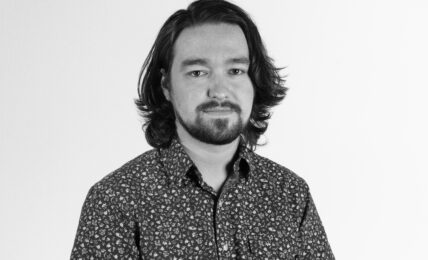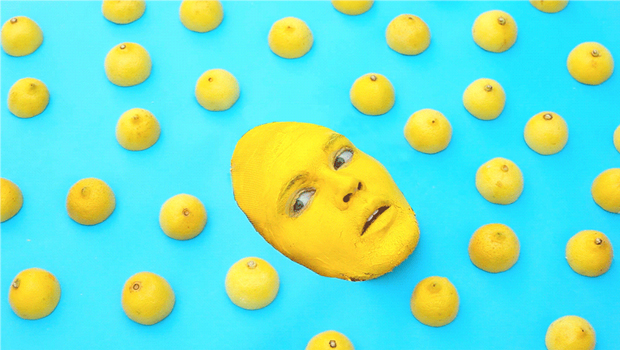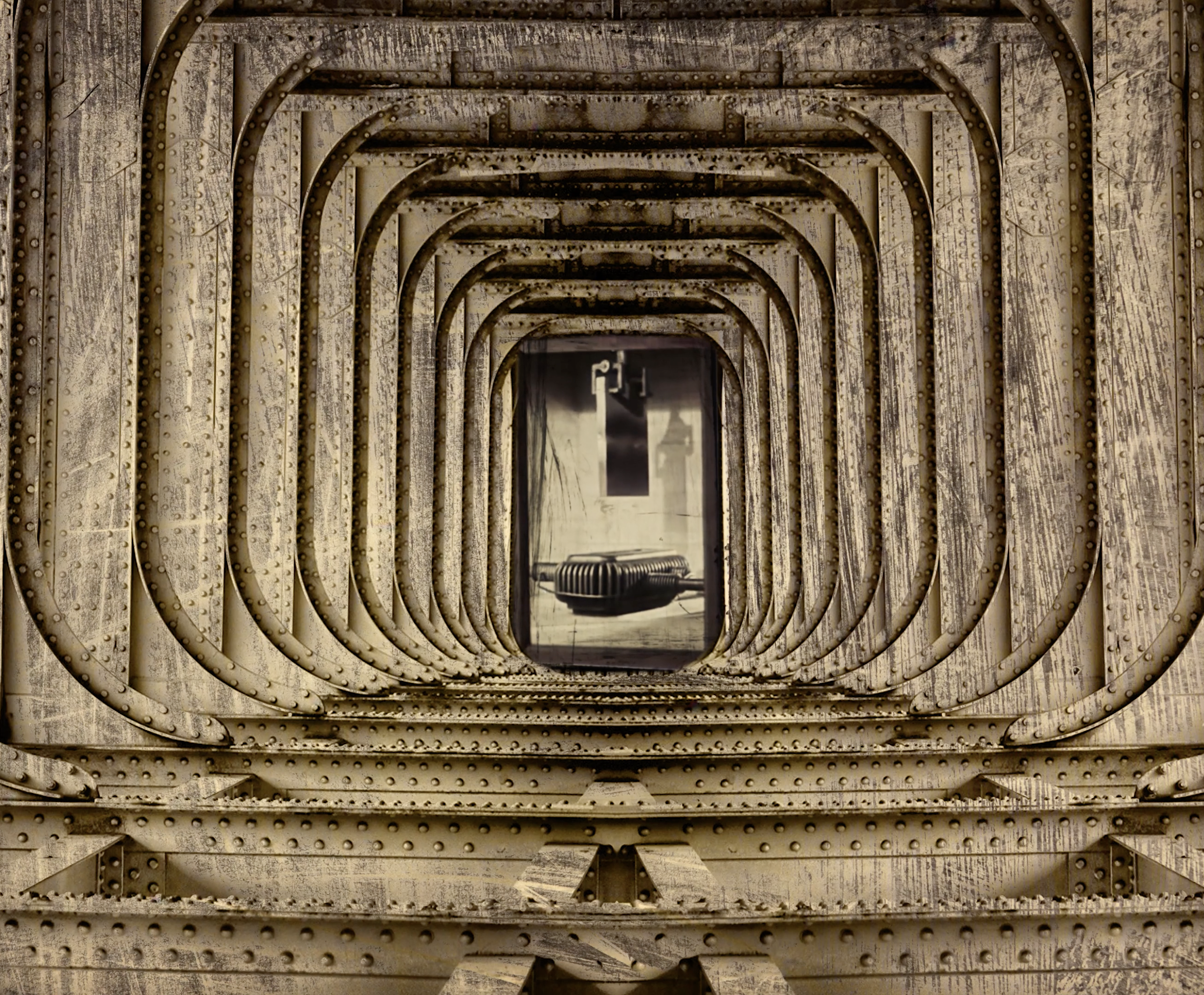Digital America interviewed Jamie Kessler in April 2022 to talk about Soundscapes in Motherhood (2019) and the process of creating the piece.
:::
DigA: A Bachelor of Fine Arts at Carnegie Mellon University provides professional structure to your career. In what sense did your educational experiences contextualize your art?
JK: My experience as a student artist at Carnegie Mellon had a major influence on my work and the way I contextualize my practice within contemporary art. The School of Art at CMU functions as a conceptually based interdisciplinary program which was an ideal fit for the way that I work as an artist. This allowed me to work with more fluidity across forms of art-making and also lends itself to the ideology of both challenging pre-existing and creating new definitions of art-making. As an artist, I have always more closely aligned with Conceptualism and the contemporary practices of art-making that are direct results of that movement. I am consistently interested in challenging how art is made, its societal responsiveness, and what can be considered forms of art-making rather than expanding on the history of any one particular discipline. I think of art holistically, as something intrinsic in all actions and materials. I am far more interested in the possibilities of art as a whole and so working conceptually and through an interdisciplinary structure becomes limitless and offers me more freedom as an artist. Oftentimes in my work, I feel that I am identifying art that is inherently happening in life and I use various materials or mediums to present or give recognition to it. Additionally, social practice is one of the main approaches I take in my practice, it even influences the way I approach more traditional processes of art-making. While I was a student, mentorship from celebrated social practice and teaching artists Jon Rubin and Lenka Clayton really inspired and gave force to the way I make art, they expanded and solidified my belief in the potential for art to occur in the context of daily life. But easily, one of the most impactful influences from my experience at Carnegie Mellon was the opportunity for collaborations. Collaborating with students in computer science, robotics, theater, music, and other humanities gave me access to new forms of innovation, language, and making across disciplines and opened possibilities for what I could explore as an artist.
DigA: You’ve described Soundscapes of Motherhood as human connection “represented through the technological interface.” It engages the listener with a unique auditory experience derived from the “contractions and fetal and maternal heartbeats of the artist during childbirth.” Could you describe the process of converting EKG information into a musical composition? What methods or tools were involved in this procedure? Perhaps more interestingly, how did you collect the data during labor?
JK: In all honesty, 8 years later, I still find humor in the story of this process. I was a young student artist when I had my son, Elliot, I was 22 at the time. Before becoming pregnant I had been exploring the artistic possibilities of biotechnology as it related to my exploration of family, cultural heritage, and the presence of technology in the modern age. In truth, I can be very critical of technology and its potential uses and impact, but at the same time it can allow for so many possibilities and benefits to humanity – these were thoughts I was exploring at the time. Before I made Soundscapes in Motherhood I had made a work called Bone and the Dialectical Ancestor in which I recreated a chandelier from the Church of Bones or the Sedlec Ossuary In Kutna Hora, Czech Republic where some of my ancestors lived before immigrating to the US. The many parts of the Sedlec Ossaury including the chandelier are constructed of human skeletons. During the Black Death pandemic of 14th century Europe, the church ran out of burial places and started to honor the deceased by incorporating the remains into the structure of the architecture. I had been in a car accident during college and had a CT scan taken. With help, I used the CT scans to create digital 3D models of my skull, neck, and collar bone. My husband, Eli Kessler, is a sculptor and he was able to help me digitally compose a recreation of the Church of Bones chandelier. This work really primed me to be able to make Soundscapes in Motherhood. This is the funny part, I was actively in labor, it was a very long labor and I was in the hospital for days when the idea just struck me. I told my husband, Eli, about the concept for the work and he asked the nurse if she could print out copies of the EKG chart and explained the idea for the artwork. I was frantically writing out plans for the work when I overheard my family laughing and my mother said to me, “I cannot believe you are seriously making art while you are in labor”. My best inspiration always finds me in unexpected moments- that’s usually my signal into knowing it’s authentic and worth the pursuit. About 8 months later, I returned to Carnegie Mellon and collaborated with two student composers, one who planned to create a symphony version of the work and another who I worked more closely with to create a harp-specific piece. We discussed the similarities I saw between the visual patterning of sheet music and the EKG graph and then allowed them to use their artistic freedom to interpret the graphs into music. In both Soundscapes in Motherhood and Bone and the Dialectical Ancestor, I really wanted to push these medical technologies to represent the humanity of the person or people.
DigA: Soundscapes of Motherhood was performed live as a symphony at the Mellon Institute at Carnegie Mellon. I found this to be powerful, and am curious how the live experience and recorded experience would change my perception of the piece. How do you think the piece differs when being heard in its symphony form versus in a gallery atmosphere or through headphones at home?
JK: The live symphony performance really felt like an art happening, and spoke to the nature of the subject in an interesting way. It only existed for a moment, it was a full sensory experience, and hearing a symphony live is something you physically feel throughout your body as it’s happening. I’m very attached to both versions though they do offer different experiences for the work.
DigA: You describe the piece as a conceptual portrait of your son. What personal impact did the creation or outcome of this piece have on you? What do you hope listeners will attain from this work of art? Were there specific emotions you were hoping to evoke?
JK: I do consider Soundscapes in Motherhood as a portrait of my son and my connection to him, in honesty it’s also something of a love letter. I hope it evokes the equal amounts of joy and vulnerability that are inherently a part of love. I think art often explores and challenges the deep complexity and contradictions within life- that’s what makes art so representative of the human experience. I recently decided to revisit these artworks. The news and tragedies of a global pandemic and the war in Ukraine surfaced these works in completely new ways for me. As I mentioned earlier, at the time I was making Bone and the Dialectical Ancestor and Soundscapes in Motherhood I was thinking about the complicated roles of technology on modern life and wanted to push these biotechnologies to represent the person from a humanistic and interpersonal perspective. When I made these artworks in 2013-2014, I was very aware that technology can serve multiple functions and aims. Today, watching the humanitarian crisis’ around the world and in Ukraine, particularly when I learned of the Russian attack on a maternity and children’s hospital in Maruipol, Ukraine, I wanted to lend my voice as an artist to speak to our need and responsibility to respect human life and dignity. Going forward, I would be interested in exhibiting Soundscapes in Motherhood as an adapted special exhibition in solidarity and support for families experiencing humanitarian crisis’ around the world.
DigA: What are you currently working on?
JK: Currently, my work explores themes of folk culture, social justice, and American identity. I’m working on a series of paintings that explore my interest in the beauty of the American landscape and its connection to the controversies and complexities of American history. I’ve been working on a series of stain-based paintings, created with dyes from materials foraged from the natural landscape, that consider the hardships and sublimity of life as it relates to the physical landscape and its connection to the socio-political history of America. Drawing from my experiences growing up in the American South, materials such as pokeweed berry, wild mulberry, river water, walnut husk, Virginian red clay soil, and wildflowers are gathered directly from the American landscape and then used to create simplistic dyes from which I use to paint. My painting series, Appalachian Alchemy, represents the change of the socio-political, cultural, and physical landscapes of America through the inevitable changes in the color, hue, and vibrancy of the earthen stain paintings over the duration of time. I’m also preparing for a few social practice works, which I’m really looking forward to, and my husband, Eli, and I have been working on proposals for a collaborative sculptural installation.
:::

Jamie Kessler is a practicing artist with an interdisciplinary practice that incorporates painting, art-actions, intervention, and social practice. She has exhibited nationally and internationally through exhibitions such as The VII International Exhibition of Mail Art, Rome, The Miller Institute for Contemporary Art, Mid-America College Art Association, Corner Projects, Chicago, GAZE Film Festival, San Francisco, and the Carnegie Museum of Art. She is a graduate of Carnegie Mellon University’s School of Art.



